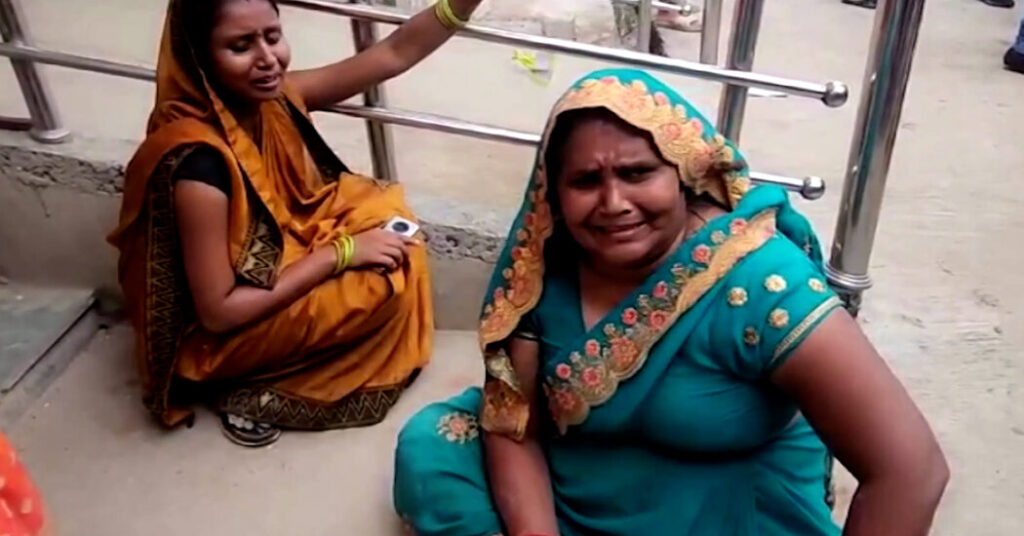More than 100 people were killed on Tuesday and many others were injured in a stampede during a Hindu religious event in the northern Indian state of Uttar Pradesh, where thousands of devotees had gathered.
Most of the dead so far have been women and children who appeared to have suffocated in a crush, in the Hathras district, said Ashish Kumar, the district magistrate there.
“As of now, the confirmed death toll is 116 people,” said Chaitra V., a top civil servant in the Aligarh administrative region, which includes Hathras.
Local officials suggested that heat and overcrowding had set off a panic; temperatures in Hathras on Tuesday approached 100 degrees Fahrenheit, with very high humidity. Eyewitnesses, speaking to local news media, said some of the victims had fallen into a drainage ditch on top of one another.
The event, a large Hindu prayer meeting, was organized by a guru locally known as Bhole Baba as well as Sakar Vishwa Hari, who has been leading such gatherings for more than two decades. The crush took place in late afternoon, at the end of the meeting, which was held under a large tent.
“When he finished his preaching and was leaving the stage, his devotees suddenly rushed toward him to touch him,” Yogi Adityanath, the chief minister of Uttar Pradesh, said in a video posted by his office. “When the volunteers tried to stop the crowd, this incident took place.”
Other officials said the lethal trampling involved people trying to leave the venue.
Mr. Adityanath said that an investigation into the cause of the stampede had been opened.
Close to midnight local time, the muddy ground — on the edge of vast farmland, next to a highway — where the tragedy occurred was largely empty. A unit of disaster responders had finished their search work, and milled around by the highway. Many of the iron poles that had held up the tent for the event still dotted the ground, as did an imposing entrance gate that still bore a poster of Bhole Baba.
Rajesh Singh, a police officer in Hathras, said a permit for the event had allowed for 5,000 people. But initial information from the scene indicated that the crowd was much larger than that, he said in a telephone interview.
More than 150 people have been admitted to different hospitals, he said.
Umesh Kumar Tripathi, a medical officer in the neighboring district of Etah, in western Uttar Pradesh, said that as more victims were taken to hospitals, “the death toll may rise.”
Prime Minister Narendra Modi, who was speaking at India’s Parliament when news of the deaths reached him, said that his “administration is engaged in relief and rescue work.”
“I assure everyone through this House that the victims will be helped in every way,” Mr. Modi said.
The guru who led the congregation is a former government employee before he became a self-styled spiritual leader and built a large following, according to Indian news media reports. During his sermons he is usually accompanied by his wife on the stage, both seated on large thrones. He is often dressed in white — either western suits with colorful ties or traditional Indian white garb.
Unverified videos on social media showed a large number of dead bodies, mostly those of women, in the courtyard of what looks like a government hospital.
Hathras lies in Uttar Pradesh, the most populous state in India, with about 240 million people.
In India, stampedes during religious pilgrimages are relatively common, often because of poor enforcement of public safety measures. In one of the deadliest in recent years, more than 100 people were killed in 2013 in the north-central state of Madhya Pradesh during a Navratri procession, a celebration of the Hindu goddess Durga.
In recent years, the authorities have increased surveillance of large religious gatherings by deploying more police officers and using drones.
“Both the state and federal governments have failed to develop a sensitive approach toward crowd management,” said a member of India’s Parliament, Manoj Kumar Jha. “As a nation we are good at drawing crowds, but not good at managing them.
“Every year, these kinds of incidents keep repeating themselves, and we learn nothing.”
Mujib Mashal contributed reporting.


